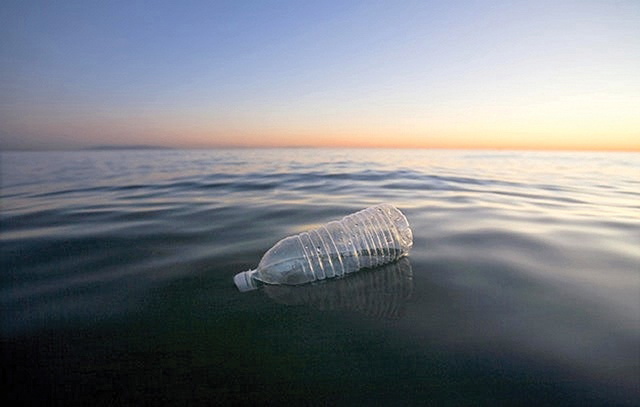We all know by now that there’s just too much plastic thrown away every day. As the great David Attenborough showed us with dying albatross chicks and turtles, our oceans are becoming a huge polystyrene soup with added floating plastic bottles. You’ve only got to look at the lines of empty cups, coffee mugs and plastic bottles washed up on the beach at Charmouth or Monmouth to know we’ve got a global plethora of plastic.
Did you know that every second of every day, 20,000 plastic bottles are purchased throughout the world! True. That’s a shocking statistic— all the more so when you realise that most of these are for bottled water. It’s really a sort of sick ecological joke: for years everyone was told to stay healthy and drink more mineral water and we’ve helped kill the planet at the same time. It’s all because of the world’s rapidly growing ‘drink and go’ throwaway society—a society that would rather buy a new bottle than re-fill the old one. I’m guilty too. We all are. So, next time you want a bottle of water, fill your old one up from your kitchen tap and you’ll help save a whale calf. Thank you…
It’s not just the bottles—it’s all that plastic wrapping that envelops everything we buy. Nearly every item in the supermarket is enclosed in shiny plastic to keep it safe, to stop bits of it falling out and to stop other people nibbling it. I suppose it might be preferable to have an apple that doesn’t have dirty fingers all over it, but some of the packaging is tough enough to resist a nuclear blast. Last week I bought a simple packet of smoked haddock which was encased in a super-hard perspex shell. For nearly an hour I fought the packaging using two knives, a screwdriver and even a tin opener before finally surrendering when I sliced my hand open and raw fish flew all over the table. Perhaps super hard wrapping (for example with packs of razor blades) could in future also contain the phone number of the nearest A&E department…
Another pet hate is packaging that contains those maddening tiny bits of polystyrene foam. This is modern day soft torture like the sound of a dripping tap or Bruno Mars on the radio. Oh, how I loathe this stuff… iddly fiddly squeaky little nodules of white nothingness that weigh practically zero and yet stick like magic to the carpet, the table and especially to each one of your fingers. You finally succeed in getting one piece off only to find it stuck permanently to the new finger that just picked it! Banning all foam stuff would be a positive step in saving dolphins as well as my patience in hoovering my floor.
There are so many excellent and innovative companies in the South West. Perhaps they can come up with some unusual and lateral packaging ideas? How about organic filler? I’ve read somewhere that there’s a biodegradable fungus that might grow inside your box and become its own wrapping. This would not only replace the dreaded packing foam, but could also be used as garden fertilizer when you’re done with it. Likewise, I reckon there’s a good commercial possibility for dried compacted horse manure which could also be removed afterwards and placed over your crop of mushrooms as a lateral benefit. Don’t worry, it’s OK—there’s no smell at all when dehydrated. Some desert tribes use desiccated manure to build their houses, so you can certainly push some manure back to Amazon the next time you want to return a package.
Another suggestion is seaweed. We’ve got lots of it on Dorset and Devon beaches. It can be squashed flat and dried and would make excellent cheap packaging. It’s also extremely nourishing and forms the basis for Sushi and healthy Japanese soups so this gives it a unique selling point: the product’s packaging tastes as good as the actual product itself—genuinely better for the environment and for you too with added vitamin B-12.
And then how about thin plates of local Portland and Purbeck slate and stone? The extra weight might make the postage more expensive, but at least your package would be completely secure. Not even knives or tin openers would get inside this baby… half an hour with a pneumatic drill might do it. There wouldn’t be much left of your original package, but at least you can rest content in the knowledge that you’ve saved a turtle or two.










